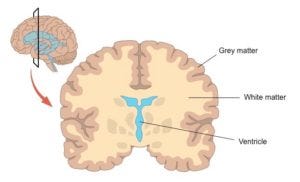Novices to the brain may think that our brain is packed full of our magnificent brain cells, neurons. I can’t remember how I used to think of the brain, but it was probably something along those lines. A mass of brain cells.
This, however, is not how the brain is structured. First off, we have grey matter and white matter. The grey matter being where our neurons the functional units of our brain sit. The white matter, basically making up a large volume of our brain, being the connections between our neurons. Sobering to think that this outer layer, grey matter is only a few millimetres thick. What is more surprising is not only is this only a thin layer, but it is clearly structured into 6 discrete layers.
When first learning of neuroscience and behaviour we often get hooked on what brain regions “do”. This is the localisation theory. There are many problems to this, but as a simplistic starting point there is probably no other way to do it. Neuroscientists themselves get hung up about other things such as how these regions communicate and coordinate together; how the vast number of chemical interactions stimulate and moderate neuronal activity; and how neurons operate in groups and what different types of neurons do in different location and regions.
This month’s short deeper dive will look at the six layers – something I found fascinating when I first learnt of it.
Keep reading with a 7-day free trial
Subscribe to leading brains Review to keep reading this post and get 7 days of free access to the full post archives.



